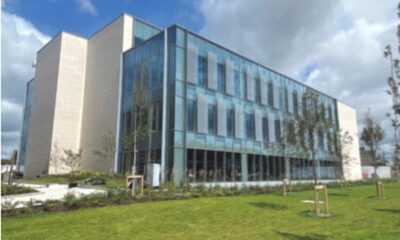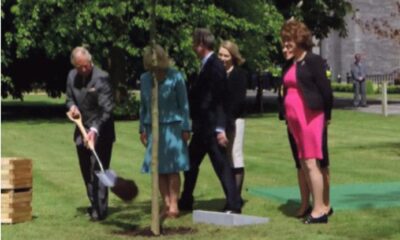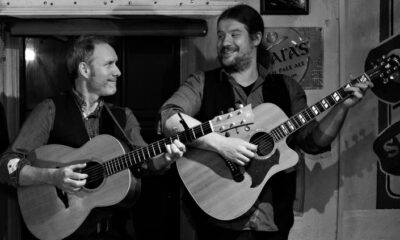CITY TRIBUNE
Freemasons’ TLC project brings comfort to kids in hospital
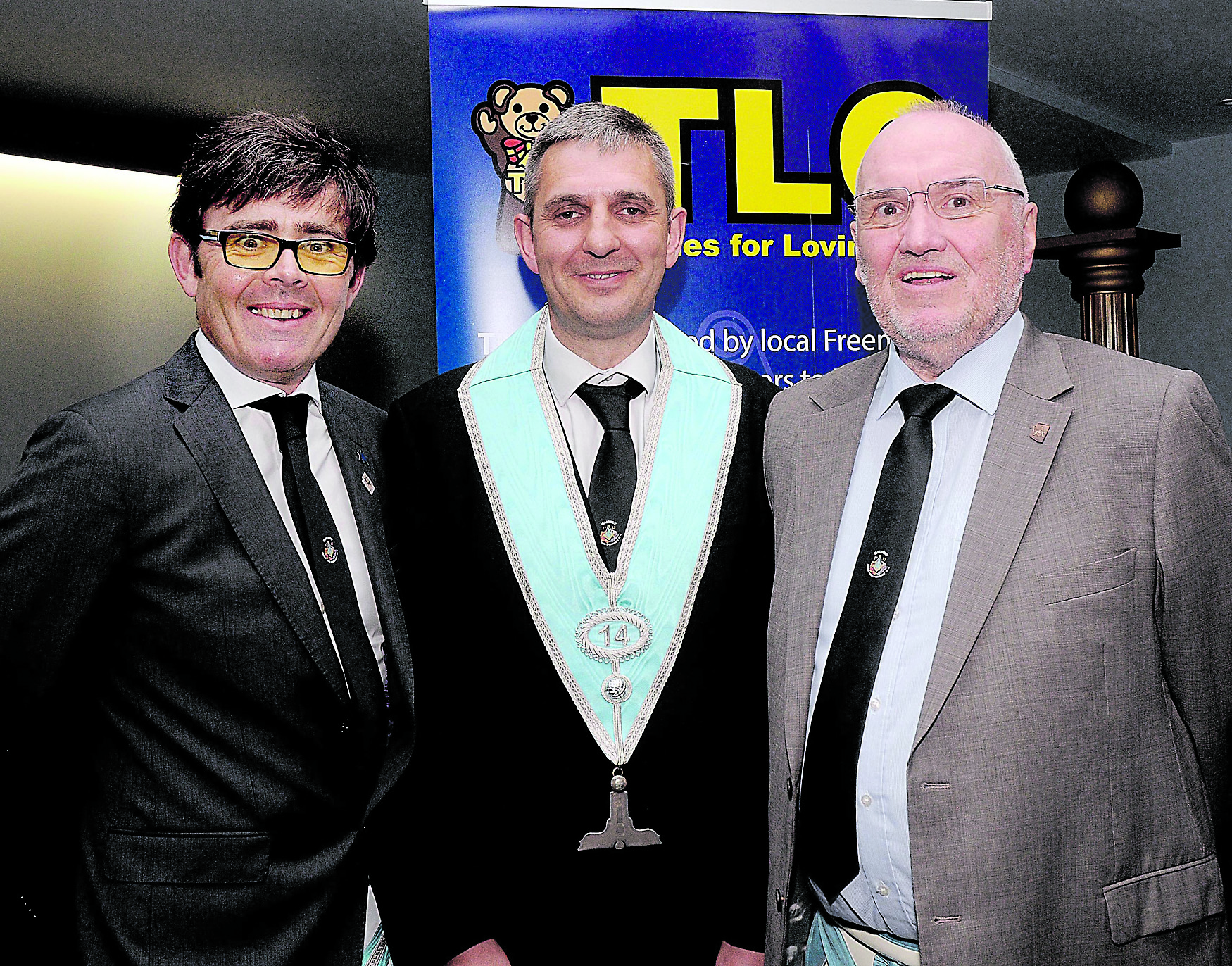
There didn’t seem to be much mystery shrouding proceedings at the Freemason’s lodge in Ballinfoile, with its door wide open and events playing out for all to see.
Perceived as an exclusive and secretive group, Galway Freemason’s Lodge on Bóthar an Choiste seemed the furthest thing from elitist as the group gathered to celebrate the success of their ‘Teddies for Loving Care’ initiative.
TLC has been running now for a number of years and involves Freemasons providing teddies for paediatric units in hospitals up and down the country.
Freemasonry is one of the world’s oldest organisations for men and, having had a presence in Galway since 1722, the group certainly has staying power.
Almoner of Galway City Freemasons (Lodge 14), Basil Fenton, says that perceptions of the organisation are sometimes distorted.
He believes that ultimately, the group aims to have a positive impact on society and to the benefit of more than just their members.
“There are altruistic reasons for wanting to try and do a bit of good and that’s where the main focus is in terms of the charities,” says Basil.
TLC is a national initiative but one that has had a significant local impact – with anything up to 70 teddies being delivered into University Hospital Galway every week.
“This is where 36 hospitals within the country have A&E departments with specific facilities for paediatrics and we supply teddies free of charge to those hospitals.
“We provide the teddies and then it is at the discretion of nurses on duty – if a small child comes in distressed, they get a little teddy,” explains Basil.
“They are bought in from abroad and stored in Dublin – then by some means of distribution, they are brought down to Galway or Limerick or up to Belfast or Ballymena or wherever.
“A local member will keep in touch with nurses in paediatrics and they bring them in as they require them – the teddies are sterile and approved for hospital use,” he continued.
It is believed that the Freemasons emerged in the fifteenth century – as Basil says, “when they were really stonemasons”.
It was from here, according to him, that the symbolism and rituals originated.
“In one sense, it would have originally been almost like a trade union and you hear people talking about the secret signs and symbols – at that time you didn’t have certificates or diplomas to say what level of qualification you were.
“It was using these signs and symbols that you could prove you were really an advanced carpenter or mason and therefore eligible to earn more money,” says Basil.
To maintain tradition, the Freemasons continue to wear regalia that includes sashes and aprons – representative of the apron that stone masons would have worn to protect their trousers.
The rituals as members progress from apprentice to fellowcraft before becoming a Master Mason still continue – something that Basil concedes that his wife refers to as “play-acting”.
He feels that misconceptions of the organisation both attracts and deters – and leads to people seeking to join for differing reasons.
As a result, it is quite a laborious task to join, involving a period of scrutiny to ensure that potential members want to give back rather than just take from the organisation.
“Some people come in with expectations of rituals or sudden introduction into somewhere and that is why there is the scrutiny or screening process – to try and let the person know that your perception of what to expect is not what it really is.
“There are three basic qualifications – first of all, he has to be a man, he has got to believe in some supreme being of some sort and he must live in good repute amongst his friends and neighbours,” explains Basil.
And it isn’t some covert or secretive applications process – it is simply a matter of making an online application to be contacted.
“It isn’t for everybody but a lot of people get great enjoyment out of it – there are about 25,000 members around the country.
“People join a rugby club because they enjoy rugby – people join us because they find it enjoyable and they have similar aims in terms of trying to improve things for charities or whatever along the line,” says Basil.
As for why he joined, it was a combination of curiosity and security – with the Freemasons offering support to any families left behind if a member passes away.
“There are the Masonic charities for people who have fallen on hard times within the order – I saw security in terms of children getting support through education – children of members, if the member dies, will get support.
“The function of the Almoner is to look after the brethren so if somebody is sick, you visit them or you organise for them to be visited and you keep an eye on any widows you may have – if somebody has a problem or anything, you might help them with it,” he says.
As the Freemason’s lodge in Ballinfoile flooded with people and the table was filled with foil platters of party food and teddies, the so-called secret society seemed anything but.
“The fact is that there is a booklet that anyone can go in and collect in the Grand Lodge in Dublin that has all the names and addresses of every lodge in the country and the contact details for them.
“There’s nothing clandestine or hidden – it’s in the public sphere, identifiable and available,” says Basil.
CITY TRIBUNE
Galway ‘masterplan’ needed to tackle housing and transport crises
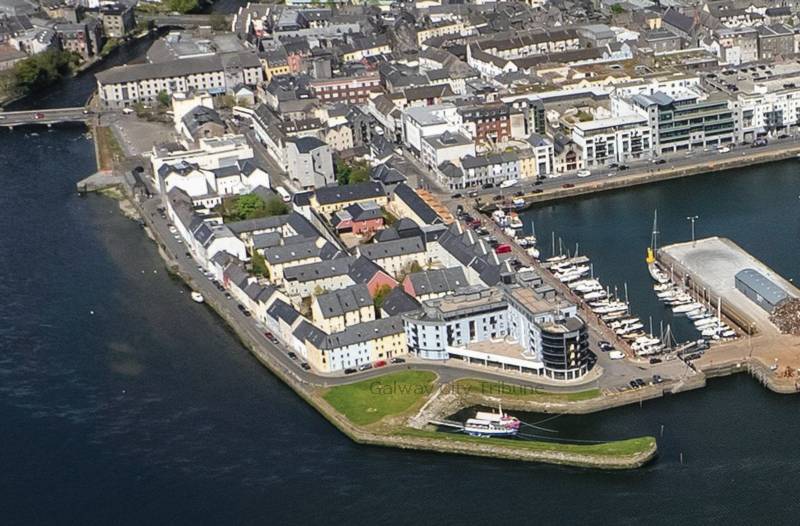
From the Galway City Tribune – An impassioned plea for a ‘masterplan’ that would guide Galway City into the future has been made in the Dáil. Galway West TD Catherine Connolly stated this week that there needed to be an all-inclusive approach with “vision and leadership” in order to build a sustainable city.
Deputy Connolly spoke at length at the crisis surrounding traffic and housing in Galway city and said that not all of the blame could be laid at the door of the local authority.
She said that her preference would be the provision of light rail as the main form of public transport, but that this would have to be driven by the government.
“I sat on the local council for 17 years and despaired at all of the solutions going down one road, metaphorically and literally. In 2005 we put Park & Ride into the development plan, but that has not been rolled out. A 2016 transport strategy was outdated at the time and still has not been updated.
“Due to the housing crisis in the city, a task force was set up in 2019. Not a single report or analysis has been published on the cause of the crisis,” added Deputy Connolly.
She then referred to a report from the Land Development Agency (LDA) that identified lands suitable for the provision of housing. But she said that two-thirds of these had significant problems and a large portion was in Merlin Park University Hospital which, she said, would never have housing built on it.
In response, Minister Simon Harris spoke of the continuing job investment in the city and also in higher education, which is his portfolio.
But turning his attention to traffic congestion, he accepted that there were “real issues” when it came to transport, mobility and accessibility around Galway.
“We share the view that we need a Park & Ride facility and I understand there are also Bus Connects plans.
“I also suggest that the City Council reflect on her comments. I am proud to be in a Government that is providing unparalleled levels of investment to local authorities and unparalleled opportunities for local authorities to draw down,” he said.
Then Minister Harris referred to the controversial Galway City Outer Ring Road which he said was “struck down by An Bord Pleanála”, despite a lot of energy having been put into that project.
However, Deputy Connolly picked up on this and pointed out that An Bord Pleanála did not say ‘No’ to the ring road.
“The High Court said ‘No’ to the ring road because An Bord Pleanála acknowledged it failed utterly to consider climate change and our climate change obligations.
“That tells us something about An Bord Pleanála and the management that submitted such a plan.”
In the end, Minister Harris agreed that there needed to be a masterplan for Galway City.
“I suggest it is for the local authority to come up with a vision and then work with the Government to try to fund and implement that.”
CITY TRIBUNE
Official opening of Galway’s new pedestrian and cycle bridge
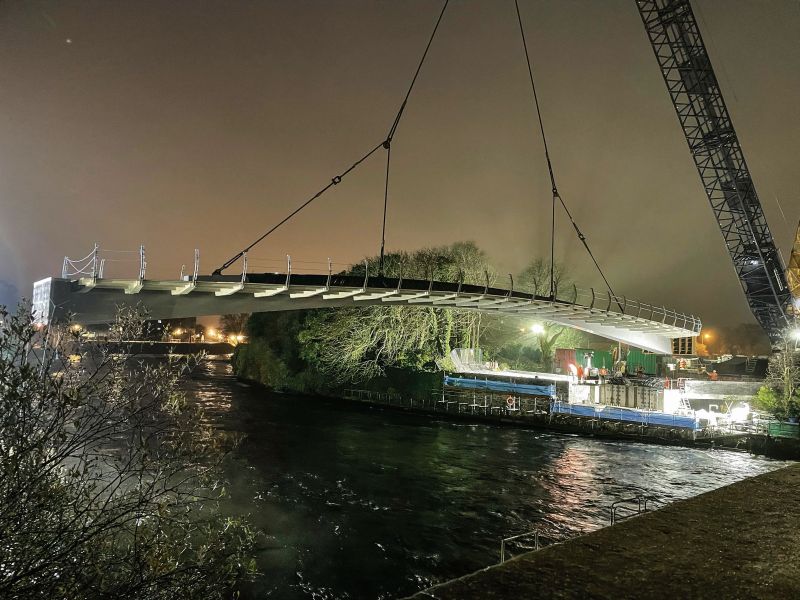
The new Salmon Weir pedestrian and cycle bridge will be officially opened to the public next Friday, May 26.
Work on the €10 million bridge got underway in April 2022, before the main structure was hoisted into place in early December.
A lunchtime tape-cutting ceremony will take place on Friday, as the first pedestrians and cyclists traverse the as-yet-unnamed bridge.
The Chief Executive of Galway City Council, Brendan McGrath, previously said the bridge, once opened, would remove existing conflicts between pedestrians, cyclists and traffic “as well as facilitating the Cross-City Link public transport corridor over the existing 200-year-old bridge”.
The naming of the new bridge has been under discussion by the Council’s Civic Commemorations Committee since late last year.
One name that has been in the mix for some time is that of the first woman in Europe to graduate with an engineering degree – Alice Perry.
Ms Perry, who was from Wellpark, graduated from Queen’s College Galway (now University of Galway) in 1906. The university’s engineering building is named in her honour.
The bridge was built by Jons Civil Engineering firm in County Meath and was assembled off-site before being transported to Galway. Funding for the project was provided in full by the National Transport Authority and the European Regional Development Fund.
(Photo: Sheila Gallagher captured the city’s new pedestrian footbridge being raised on the south side of the Salmon Weir Bridge in December. It will officially open next Friday, May 26).
CITY TRIBUNE
Minister branded ‘a disgrace’ for reversing land rezoning in Galway City

From the Galway City Tribune – Minister of State for Local Government and Planning, Kieran O’Donnell was labelled a “disgrace” for overturning councillors’ decisions to rezone land in the new City Development Plan.
Minister O’Donnell (pictured) confirmed in a letter to Council Chief Executive Brendan McGrath last week that he was reversing 25 material alternations made by councillors to the CDP 2023-29. He made the decision on the advice of Office of Planning Regulator (OPR).
Minister O’Donnell directed that 14 land parcels that were subject to land-use zoning changes by councillors as part of the Material Alterations to the Draft CDP should be reversed.
He directed that a further 11 land parcels in the city should become “unzoned”.
The Minister found that the CDP had not been made in a manner consistent with recommendations of the OPR, which required specific changes to the plan to ensure consistency with the national planning laws and guidelines.
At last week’s Council meeting Cllr Eddie Hoare (FG) asked for clarity on the process by which councillors could rezone the lands that had been changed by the Minister’s direction.
Cllr Declan McDonnell said, “What he [Minister O’Donnell] has done is an absolute disgrace”.
And he asked: “Do we have to have another development plan meeting to deal with it?”
Both Cllrs Hoare and McDonnell wondered what would become of the lands that were rezoned or unzoned by the ministerial direction.
Mr McGrath said the Council had put forward an argument in favour of retaining the material alterations in the plan, but ultimately the Minister sided with OPR.
He said if councillors want to make alterations to the new plan, they could go through the process of making a material alteration but this was lengthy.
The Save Roscam Peninsula campaign welcomed the Minister’s decision.
In a statement to the Galway City Tribune, it said the direction would mean the Roscam village area on the Roscam Peninsula will be unzoned and a number of land parcels would revert back to agriculture/high amenity.
A spokesperson for the campaign said: “the material alterations made by city councillors following lobbying by developers continued the long-standing practice of councillors facilitating a developer-led plan rather than an evidence- and policy-based plan that meets the needs of the city.
“The Minister’s direction is an important step in restoring confidence in the planning system. It is clear from the City Council’s own evidence on future housing projections that there was no requirement to zone these lands for residential purposes in order to meet the needs of the targeted population increase up to 2029,” the spokesperson added.


